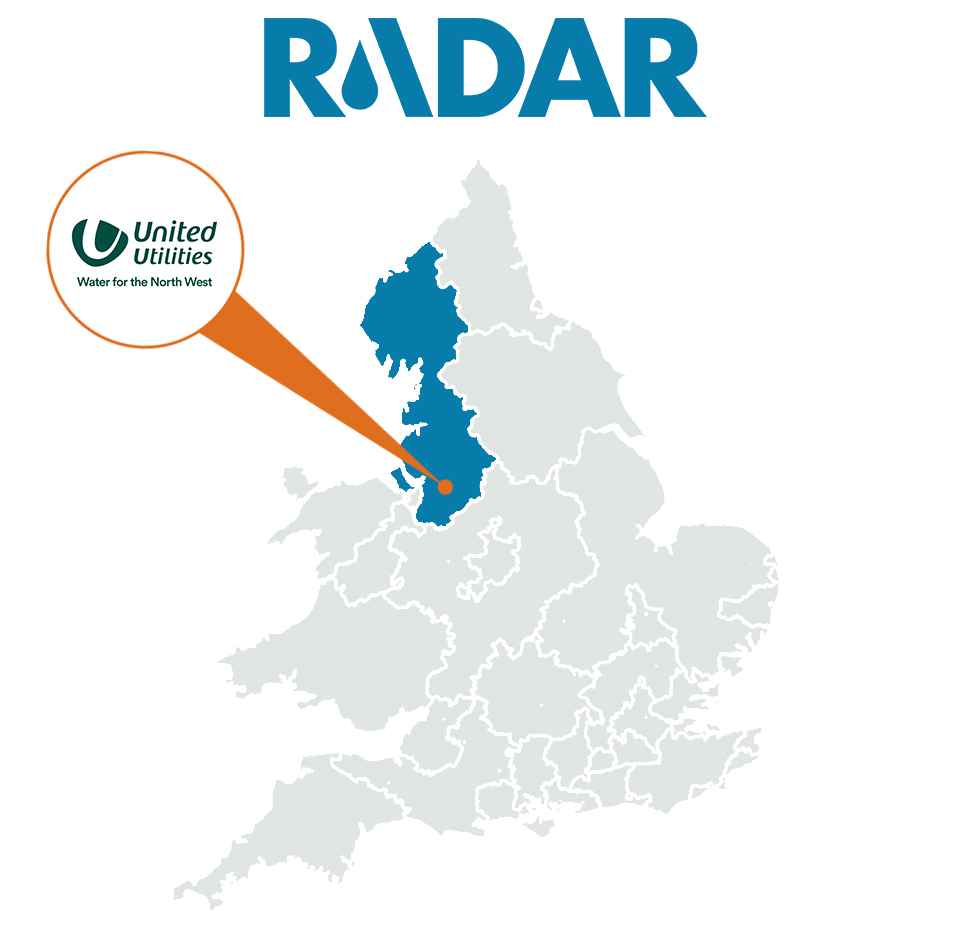United Utilities have invested well in acoustic technology and achieved some fantastic benefits, but with the opportunity coming up for further investment, they were keen to understand whether their fleet could deliver even more benefit.
Radar: United Utilities
The project looked at their processes and analysis approach to understand potential improvements and then trialed the process.

“The acoustic analysis, reports have helped me by reducing the amount of time spent manually searching through DMA deployments. Manually reviewing each individual DMA and/or loggers is time consuming and repetitive, but having reports which direct me straight to an alarm not only saves me time, it allows me to use it effectively elsewhere. The Logger Status Report allows us to quickly check which loggers require further analysis and has significantly reduced the amount of manual work needed to track repairs.”
– Callum D’Arcy
The challenge
With large scale permanent acoustic logging being relatively new to the UK industry, best practice has been evolving and developing at a rapid pace. This had led to a difference in approach across some of the regions in United Utilities and a risk of lessons learnt in this short period of time being lost if structured training for new team members doesn’t keep up with new approaches.
Our solution
Our team spent time going through the existing process documentation and conducting structured interviews with each of the regional teams to understand what was working well and where the teams felt they needed extra support. They also reached out to some of our contacts across the industry to understand wider best practice. The learnings from each of the teams was compiled to create a single consolidated process document and approach. This will ensure consistency of approach across areas and provide a reference for new analysts joining the team.
One of the key areas identified was the considerable amount of time spent by analysts creating reports and consolidating data sets from different sources. With many teams using the same data and several bottle necks for requesting reports, there was an opportunity to create some standardised reporting to support the teams. By automating the data capture and scheduling these reports to run regularly, the teams could get on with analysing data and delivering additional insight. This included a Logger Status Report to compare whether loggers could still hear a leak with the status of investigations and repairs around that logger, and a Slow Ascend Report, which identified ascending minimum night flows and looked for loggers with corresponding increases in noise.
The results
United Utilities Acoustic Analyst Callum, said: ‘The reports have helped me by reducing the amount of time spent manually searching through DMA deployments. Manually reviewing each individual DMA and/or loggers is time consuming and repetitive, but having reports which direct me straight to an alarm not only saves me time, it allows me to use my available time effectively elsewhere. The Logger Status Report allows us to quickly check which loggers require further analysis and has significantly reduced the amount of manual work needed to track repairs. The Slow Ascend Report is useful, though has not generated as many jobs as the Logger Status Report. That said, we have raised jobs from the report’s indications of slow ascends, allowing us to capture leaks before they become problematic.’
